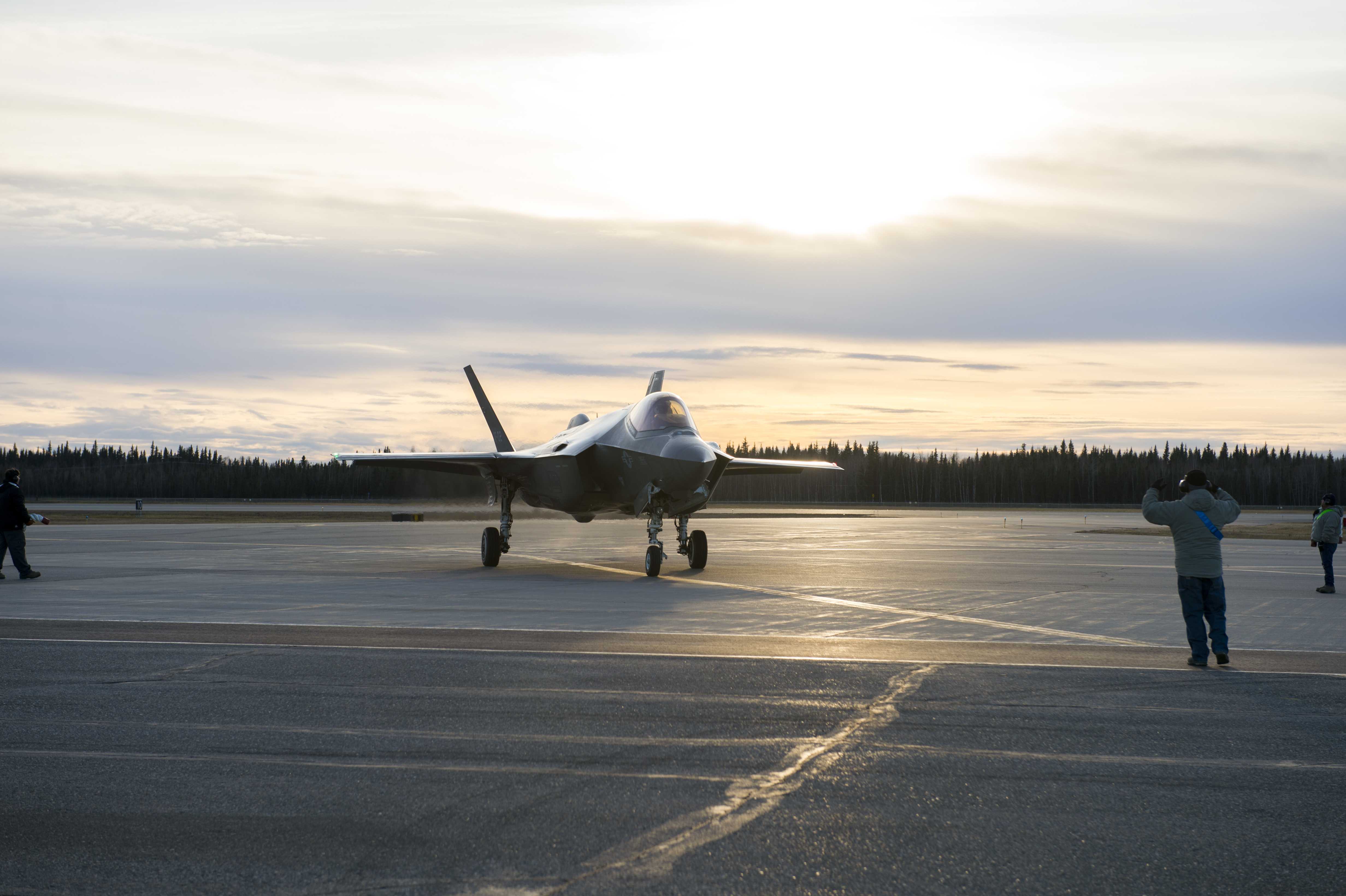
The Air Force is conducting cold weather testing on six F-35 strike fighters at Eielson AFB, Alaska. Air Force photo by A1C Isaac Johnson.
A half-dozen F-35 jets—two of each variant—deployed to Eielson AFB, Alaska, on Jan. 18 for cold weather testing as part of an unusual effort to speed up initial operational test and evaluation, according to USAF officials.
The Air Force Operational Test and Evaluation Center at Kirtland AFB, N.M., in coordination with the Pentagon’s Operational Test and Evaluation shop, has begun “pre-IOT&E” activities on the F-35, to “mitigate delays in program development,” a center spokeswoman said.
Plans initially called for all-up IOT&E on the F-35 to begin late last year, but now won’t likely start until “late third quarter 2018,” she said. The delays are due to an insufficient number of F-35s in the all-up 3F configuration to begin IOT&E, which effectively “graduates” the F-35 from the system design and development phase. The “pre” tests can be done now, however, and don’t necessarily depend, for example, on mission data files being fully populated with regional threat information, which is one of the drags on starting the all-up testing.
The tests are “for score,” meaning the F-35’s operational suitability will be judged based in part on the pre-IOT&E activities. In addition to cold weather testing, a second set of pre-IOT&E tests will be done, likely starting in the second quarter of this year, to evaluate the F-35 in tactical missions such as close air support, strike coordination and reconnaissance, aerial reconnaissance, and airborne forward air control. These tests will include weapons delivery effectiveness evaluations. They will also include assessments of F-35B and C variants in shipboard operations. Those tests will include a detachment of aircraft of each type, and will begin “when the requisite entry [to IOT&E] criteria are met,” the spokeswoman said.
Former F-35 Joint Program Office director retired Lt. Gen. Christopher Bogdan and current JPO director Vice Adm. Mat Winter both told Air Force Magazine last year they were negotiating with director of operational test and evaluation officials on getting IOT&E underway early in 2018, so time would not be lost waiting for all the necessary aircraft in the proper configuration to be available. Bogdan said delays could cost millions of dollars per month, and both he and Winter said the DOT&E shop was favorably disposed to allowing the unconventional approach.
The six jets at Eielson are doing cold weather testing in temperatures averaging -23 degrees Fahrenheit. AFOTEC and the Defense Department’s OT&E are collecting “data regarding the F-35 air vehicle system’s effectiveness, suitability, and mission capability during alert launches in cold weather,” said Maj. Gen. Matthew Molloy, AFOTEC commander and head of the F-35 joint operational test team.
The Joint team includes representatives from the Air Force, Navy, and Marine Corps, as well as Australia, Netherlands, and UK. Specifically, the F-35’s operational capabilities are being scrutinized for “deployability, logistics footprint, alert launch timing and capability, aircraft maintenance procedures, and IT supportability,” Malloy said.
When airborne, the jets are also providing “valuable, ‘not-for-score’ test design data on both CAS … and DCA [defensive counter-air] mission areas, which will be formally evaluated at a later date” during initial operational test and evaluation, he said.
Molloy said he was “proud and amazed” at the performance of the multinational test team. “They’re doing phenomenal work in very challenging weather conditions … and it’s forecast to get colder,” he said. The effort will be “worth it” to “deliver operational insight” to combat users of the F-35, he added.